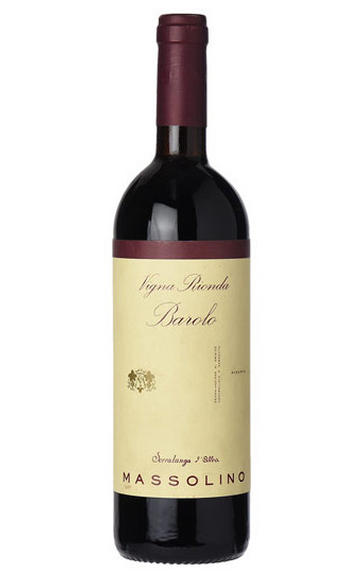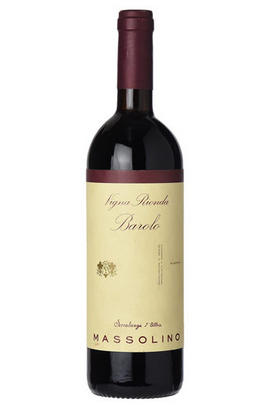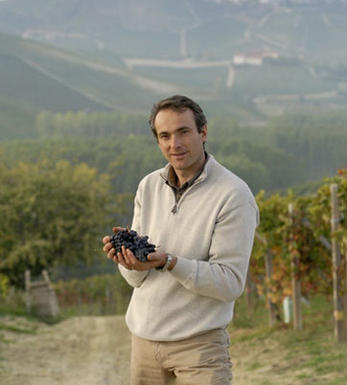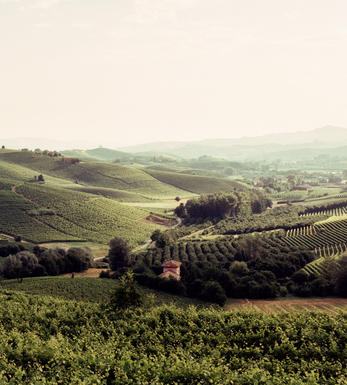
2016 Barolo, Vigna Rionda, Riserva, Massolino, Piedmont, Italy

Critics reviews
The 2016 Barolo Riserva Vigna Rionda is absolutely stunning. Deep and statuesque in bearing, the 2016 captivates all the senses from start to finish. A whole range of Rionda aromatics soars out of the glass. Silky and yet powerful, gracious and yet full of gravitas, the 2016 captures all the contrasts that make Barolo such an alluring wine. Rose petal, lavender, red/purplish fruit, spice and new leather lend striking nuance to this hypnotic Barolo from Massolino.
Drink 2028 - 2041
Antonio Galloni, Vinous.com (February 2022)
This is an impressive production of 12,000 bottles.
Packaged with a special black label, the Massolino 2016 Barolo Riserva Vigna Rionda is only released in the best vintages. Showing the power and the determination of Serralunga d'Alba, the wine is redolent of dried berry, with lots of rusty earth and fragrant red rose. These are the typical aromas of this vineyard, and this wine presents them with impeccable integration. To the palate, this Riserva remains open-knit, tightly structured and broad in scope.
Drink 2025 - 2060
Monica Larner, Wine Advocate (June 2022)
Tasting this Vigna Rionda is such a sensual experience, with the complexity you’d expect from the top-level Barolo, showing hints of iodine, dark mussels, walnuts, and dark stones to the fleshy dark cherries and plums. Then it turns a little “bloody,” minty and tarry on the nose. “Dark” and full-bodied with a massive amount of small-grained tannins seamlessly knitting the fruit on the palate, driving it to a very long, mineral finish. Very tight and powerful now, yet seductively rich and full of flesh, too. Shows lots of potential ahead.
Much better from 2025. It should hold well for the next 20+ years.
Drink 2025 - 2050
James Suckling, JamesSuckling.com (December 2022)
About this WINE

Massolino
Based in the heart of the village of Serralunga, Massolino is a historical estate now managed by Franco Massolino. The estate was established in 1896 by Franco’s great-grandfather, and its running has been deeply interwoven throughout different generations. Charming and open yet reflective, Franco combines a willingness to challenge assumptions with a deeply-felt sense of responsibility to his family legacy. This legacy, in his view, is to faithfully represent the wines and unique heritage of the region. To give the purest expression of the grape, vinification is traditional, with fermentation and maceration for around 21 days in temperature-controlled, open oak fermenters called tini. The wine is the aged in large Slovenian oak botti – no oak toast, just steamed – for up to 30 months before being left to mature in bottle.
Franco Massolino feels that 2019 is a more traditional vintage: one with complexity, powerful tannins, lovely purity, and one capable of great longevity. He is not concerned about the level of the tannins, feeling that they are “smooth” and “like china”. He observes that even with excellent ripeness analysis, a late harvest always gives more tannic power. Franco is not a commentator drawn to hyperbole; his communication is measured and thoughtful. But, a twinkle in his eye betrays that this is a style of vintage that appeals to him very much.

Barolo
Located due south of Alba and the River Tanaro, Barolo is Piedmont's most famous wine DOCG (Denominazione di Origine Controllata e Garantita), renowned for producing Italy's finest red wines from 100 percent Nebbiolo.
Its red wines were originally sweet, but in 1840 the then extant Italian monarchy, the House of Savoy, ordered them to be altered to a dry style. This project was realised by French oenologist Louis Oudart, whose experience with Pinot Noir had convinced him of Nebbiolo's potential. The Barolo appellation was formalised in 1966 at around 1,700 hectares – only a tenth of the size of Burgundy, but almost three times as big as neighbouring Barbaresco.
Upgraded to DOCG status in 1980, Barolo comprises two distinct soil types: the first is a Tortonian sandy marl that produces a more feminine style of wine and can be found in the villages of Barolo, La Morra, Cherasco, Verduno, Novello, Roddi and parts of Castiglione Falletto. The second is the older Helvetian sandstone clay that bestows the wines with a more muscular style. This can be found in Monforte d'Alba, Serralunga d'Alba, Diano d'Alba, Grinzane Cavour and the other parts of Castiglione Falletto. Made today from the Nebbiolo clones Lampia, Michet and Rosé, Barolo has an exceptional terroir with almost every village perched on its own hill. The climate is continental, with an extended summer and autumn enabling the fickle Nebbiolo to achieve perfect ripeness.
Inspired by the success of modernists such as Elio Altare, there has been pressure in recent years to reduce the ageing requirements for Barolo; this has mostly been driven by new producers to the region, often with no Piedmontese viticultural heritage and armed with their roto-fermenters and barriques, intent on making a fruitier, more modern style of wine.
This modern style arguably appeals more to the important American market and its scribes, but the traditionalists continue to argue in favour of making Barolo in the classic way. They make the wine in a mix of epoxy-lined cement or stainless-steel cuves, followed by extended ageing in 25-hectoliter Slavonian botte (barrels) to gently soften and integrate the tannins. However, even amongst the traditionalists there has been a move, since the mid-1990s, towards using physiologically (rather than polyphenolically) riper fruit, aided by global warming. Both modernist and traditional schools can produce exceptional or disappointing wines.
Recommended traditionalist producers:
Giacomo Borgogno, Giacomo Conterno, Bruno Giacosa, Elio Grasso, Marcarini, Bartolo Mascarello and Giuseppe Mascarello.
Recommended nmdernist producers:
Azelia, Aldo Conterno, Luciano Sandrone, Paolo Scavino and Roberto Voerzio

Nebbiolo
Nebbiolo is the grape behind the Barolo and Barbaresco wines and is hardly ever seen outside the confines of Piedmont. It takes its name from "nebbia" which is Italian for fog, a frequent phenomenon in the region.
A notoriously pernickety grape, it requires sheltered south-facing sites and performs best on the well-drained calcareous marls to the north and south of Alba in the DOCG zones of Barbaresco and Barolo.
Langhe Nebbiolo is effectively the ‘second wine’ of Piedmont’s great Barolo & Barbarescos. This DOC is the only way Langhe producers can declassify their Barolo or Barbaresco fruit or wines to make an early-drinking style. Unlike Nebbiolo d’Alba, Langhe Nebbiolo can be cut with 15% other red indigenous varieties, such as Barbera or Dolcetto.
Nebbiolo flowers early and ripens late, so a long hang time, producing high levels of sugar, acidity and tannins; the challenge being to harvest the fruit with these three elements ripe and in balance. The best Barolos and Barbarescos are perfumed with aromas of tar, rose, mint, chocolate, liquorice and truffles. They age brilliantly and the very best need ten years to show at their best.


Buying options
Add to wishlist
Description
The 2016 Barolo Riserva Vigna Rionda is absolutely stunning. Deep and statuesque in bearing, the 2016 captivates all the senses from start to finish. A whole range of Rionda aromatics soars out of the glass. Silky and yet powerful, gracious and yet full of gravitas, the 2016 captures all the contrasts that make Barolo such an alluring wine. Rose petal, lavender, red/purplish fruit, spice and new leather lend striking nuance to this hypnotic Barolo from Massolino.
Drink 2028 - 2041
Antonio Galloni, Vinous.com (February 2022)
wine at a glance
Delivery and quality guarantee